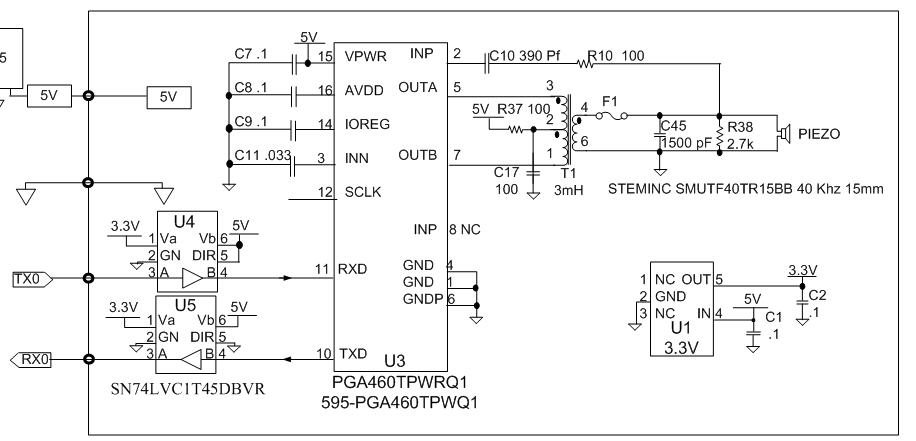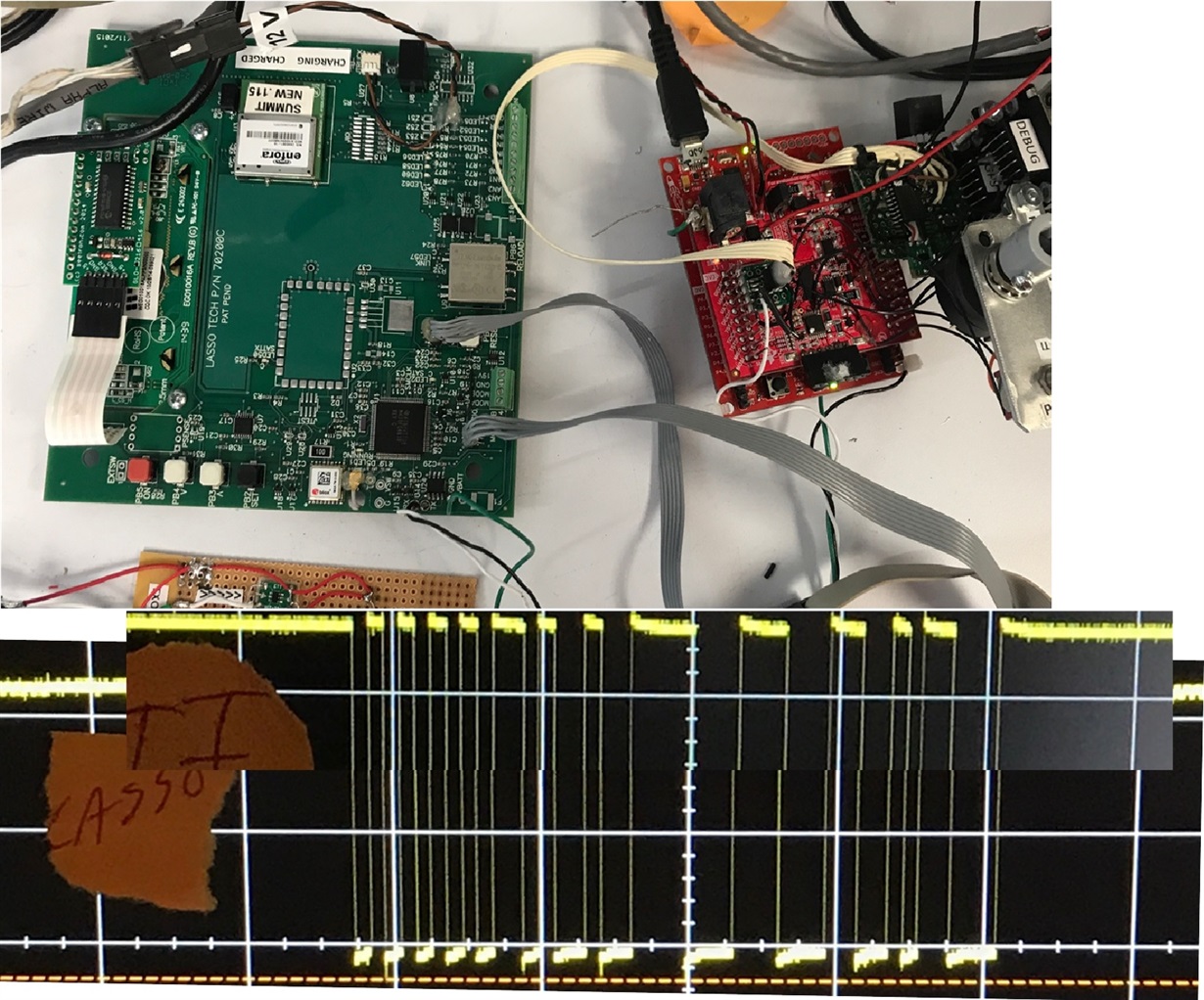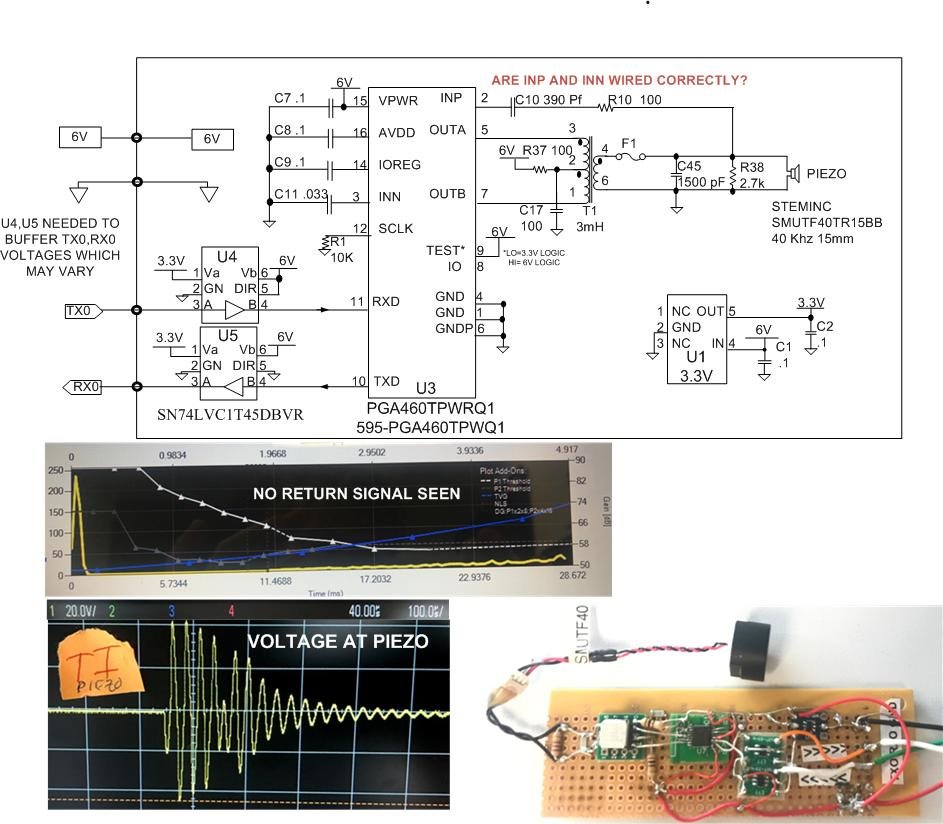We use this circuit and have a Very difficult time communicating with different chips. It seems that the 9600 baud timing must be exact or it will not communicate. Sometimes it works perfectly. Some PGA work in this circuit and some do not. RX data can be seen on the scope but there is no TX data.
=Do you see anything wrong with this circuit?
=Does the 9600 baud need to be precision? We have never had problems with other devices and the data shows up on monitors.
=Is 5V the ideal power to use on pin 15 and 5V for RX, TX (we have tried up to 5.5V and no improvement)?
=There is no activity on the OUTA and OUTB when we are able to send BURST/LISTEN. Is something missing from the circuit?
Thanks, Peter




